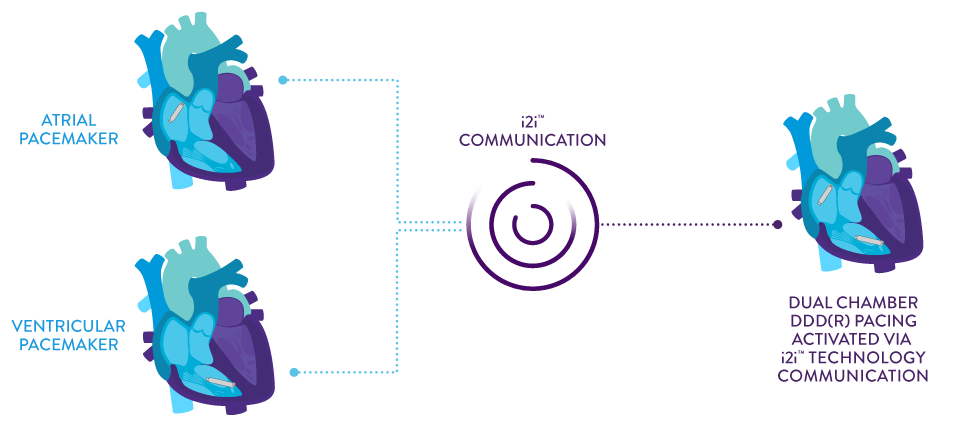MAT-2403640 v2.0 | Item approved for U.S. use only. ©2025 Abbott. All Rights Reserved.
Brought to you only by Abbott, the AVEIR DR Dual Chamber Leadless Pacemaker (LP) System is first-of-its-kind technology that provides:
Our life-changing technology provides all the clinical benefits of traditional dual chamber pacemakers without the downsides. This means:
AVEIR™ DR Leadless Pacemaker System is capable of pacing and sensing in both chambers through the combination of an atrial leadless pacemaker (AVEIR™ AR LP) and a ventricular leadless pacemaker (AVEIR™ VR LP).
Dual chamber, leadless synchronous pacing between the atrium and the ventricle is made possible with industry-first, proprietary i2i™ communication technology capable of providing true DDD(R) pacing for continuous, atrioventricular (AV) synchrony, regardless of patient posture.




Patient therapy can be tailored by implanting an atrial or ventricular device alone, or both combined, for dual chamber support. The option to upgrade over time allows you to:





Treat sinus node dysfunction today.
Treat those same patients by adding a ventricular device if heart block develops later to provide DDD(R) or AAI(R)+VVI therapy
Now you have options to adapt to patient needs over time.
The AAI(R) + VVI Pacing Mode, available for new and existing sinus node dysfunction patients with intact AV conduction, provides increased atrial and ventricular device longevities with beat-to-beat communications turned off and offers primary atrial pacing support with ventricular back-up.4
With beat-to-beat communications turned off, up to 70% increase in projected atrial device longevity compared to DDD(R).*,1

This allows for the replacement of the atrial or ventricular device at end of service (EOS) without leaving hardware behind.
The AVEIR™ VR Ventricular Leadless Pacemaker predecessor has a long-term retrieval success rate above 88% with helix fixation through 9 years regardless of implant duration.3


The specially designed retrieval catheter provides added confidence and is supported by a step-by-step retrieval protocol.5 AVEIR™ Leadless Pacemakers have an active fixation design that uses a screw-in mechanism to enable both implantation and long-term retrieval of the atrial and ventricular devices.1
Electrical mapping prior to fixation is designed to help reduce the number of repositioning attempts in the atrium and ventricle. AVEIR™ Leadless Pacemakers can assess Current of Injury via Commanded EGM, initial pacing capture thresholds, sensing amplitudes, and impedance in both atrial and ventricular chambers.
of patients had successful VENTRICULAR IMPLANTS WITH 1 OR LESS REPOSITIONING ATTEMPTS.2

of patients had successful ATRIAL IMPLANTS WITH 1 OR LESS REPOSITIONING ATTEMPTS.2



Intended for U.S. residents only. Please review our privacy policy and terms & conditions.
*1.5V, 0.4ms, 60bpm, 300 ohms, 100% A pacing, 10% V pacing, i2i™ settings = 4 / 4.
MAT-2307559 v6.0
Stay Connected